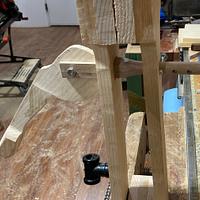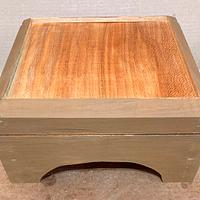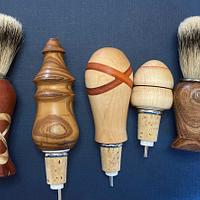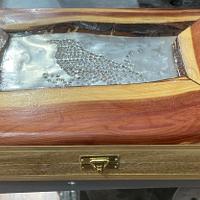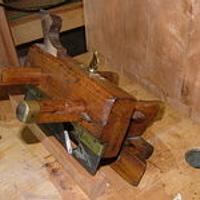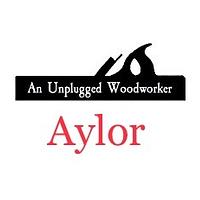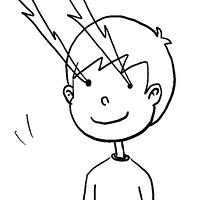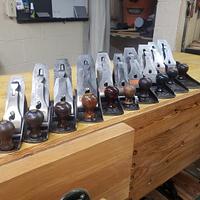
Dave Polaschek
in about 3 years
More from Dave Polaschek
User Planes Till
The planes are a transitional jack plane, a few smoothers, three block planes, and a shoulder plane. There’s also a small, Stanley #1 sized plane I got in the most recent plane swap. This ended up taking quite a bit of space on my bench.
I started yesterday by figuring out how much room I needed for the large transitional plane, then having enough room for the smaller planes on some shelves. Next was dovetailing together the carcasse, then cutting dadoes for the first divider.
Next up was cutting sloped ends on the board that would hold the transitional jack in place. I laid the board against the case and set a bevel gauge to the angle I needed. Set the table saw blade to that and nibbled away until the board fit into the case. I ended up “wasting” about a half inch of board, but it was a lot quicker than doing trig and making a mistake.

With that in place, I called it a night.
This morning, I realized that I wanted the transitional plane to sit entirely within the case, in case I later decided to add a door to keep the dust out, so I changed the angles on the end of the board and shortened it a bit more so it only used about ¾ of the depth of the case. I also made a sloped piece to sit on the bottom of case for the toe of the transitional plane to sit on.
With that done, I cut the dadoes for the shelves on the right, spacing them more or less equally within the available space. I had a little math problem with the dadoes in the right side of the case because I measured from the end of the board, which came up a little short of the end of the case. Oops. One of the shelves is noticeably sloped due to this.

I measured some boards for the back of the case, and got them ready, then with all the lumber done, I decided I wasn’t going to put a door on the case immediately, but I would decorate the front of the case with my trim router after it was assembled. I had thought about carving decorations onto the front of the boards, but I couldn’t come up with any design I really liked.
Finally, just before lunch today, I glued everything up, glued and nailed on the backboards, and screwed on a cleat and a spacer so I could hang the case on the wall.
After lunch, I trimmed a little extra length off one of the back boards and off the cleat, and used my trim router to “fancy up” the front of the case. The case is done, except for a coat of oil, which I’ll put on after I clear a few other projects from the shop. I may end up deciding to put a door on the case yet, too.

May you have the day you deserve!
27 Comments
working with my hands is a joy,it gives me a sense of fulfillment,somthing so many seek and so few find.-SAM MALOOF.
Main Street to the Mountains
Ryan/// ~sigh~ I blew up another bowl. Moke told me "I made the inside bigger than the outside".
-- Soli Deo gloria! ( To God alone be the Glory)
Thanks, Eric! My sweetie asked “why so many?” when I showed it to her yesterday, then glazed over (probably like Pottz would) about halfway through my explanation. Suffice it to say, the block planes are all set up differently, and for the smoothers, usually one is sharp enough to do the job well, and the other isn’t yet.
Thanks, Ryan! At hand, but not on the bench.
Thanks, Tom! Yeah, it was just a little disappointing to see when things actually went into the clamps and I was checking for square. But it won’t hurt anything.
Thanks, Oldrivers!
May you have the day you deserve!
Knowing how to use a tool is more important than the tool in and of itself. - Ron Aylor
Slop is to keep the planes from sliding out (or to keep them properly place against the side which is the engineering reason I'd come up with when asked)
Does need a door, gotta keep the black widows out, maybe a punched tin panel? Lets your friends breath!
Don’t sweat the small stuff
Don't sweat the petty things and don't pet the sweaty things.
Thanks, Splint! The main problem with a door is that my cleats are full enough that either way I make a door swing in this one, it would block something else when open. But a punched tin panel might be the excuse I need to rearrange things so that they line up better.
May you have the day you deserve!
Nice useful cabinet. Tools need a place to live.
I am finding use for the smaller planes last couple years.
daveg, SW Washington & AZ
No name noobie here
Cheers, Jim ........................ Variety is the spice of life...............Learn something new every day
Splint, I’ve already got one till (of files) with a lift-up door. That’s probably what I would move next to this one if I decide to put a door on this.
Thanks, YRTi!
Thanks, Jim!
May you have the day you deserve!
Jerry-Holland Mi
Main Street to the Mountains
James McIntyre
Thanks, James!
May you have the day you deserve!
Jerry-Holland Mi









